Football on the Roof of the World
On the day that Brazil and Germany’s football teams faced off in the 2002 World Cup, FIFA’s two lowest-ranked teams, Montserrat and Bhutan also played their own final.
June 30, 2002 was a big date on the football calendar, the FIFA World Cup Final between heavyweights Brazil and Germany at the International Stadium in Yokohama, Japan. Watching the live broadcast together were two lesser-known national teams, lowest-ranking Bhutan and Monserrat, who’d just played each other in a very different match at Changlimithang Stadium in Bhutan’s capital city of Thimphu. The story of this unusual game was captured in a 2003 documentary, The Other Final, produced by Kessels Kramer, the Amsterdam marketing agency that made the whole event possible.
The official story for the motivation behind The Other Final is that when the Netherlands failed to qualify for the World Cup, Matthijs de Jongh and Johan Kramer of Kessels Kramer were so disappointed that they decided to come up with an idea to entertain themselves during the long football drought sprawling out ahead of them. Looking at the league tables, they hit upon the idea of getting the two lowest-ranked teams together and holding their own final match. ‘That’s the official version,’ says de Jongh, ‘but the real story behind it is that I had been in Bhutan in 2000 and 2001, and I was fascinated by the country and wanted to share it.’
‘When you read about Bhutan or watch a documentary about it, it’s always about the temples, the Buddhism, the incense, the traditional dress, it’s all very traditional,’ explains de Jongh.
The Kingdom of Bhutan is a landlocked country bordered by China to the north, and by India to the south, east and west. It ranked as the eighth-happiest country in the world in a 2006 Business Week report, and is widely known as a Shangri-La for its unspoilt environment and rigorous efforts to maintain its own identity.
‘When you read about Bhutan or watch a documentary about it, it’s always about the temples, the Buddhism, the incense, the traditional dress, it’s all very traditional,’ explains de Jongh. ‘So I said to Johan that we should do a project together; we should film something there, but we shouldn’t just cover the mountains or the temples—we needed some sort of contemporary angle.’
How did football come into the plan? ‘We looked up what Bhutan was doing with football, and at the time they were second-last in the official FIFA world ranking, which makes you curious as to who is the last. And that happened to be Monserrat,’ de Jongh remembers.
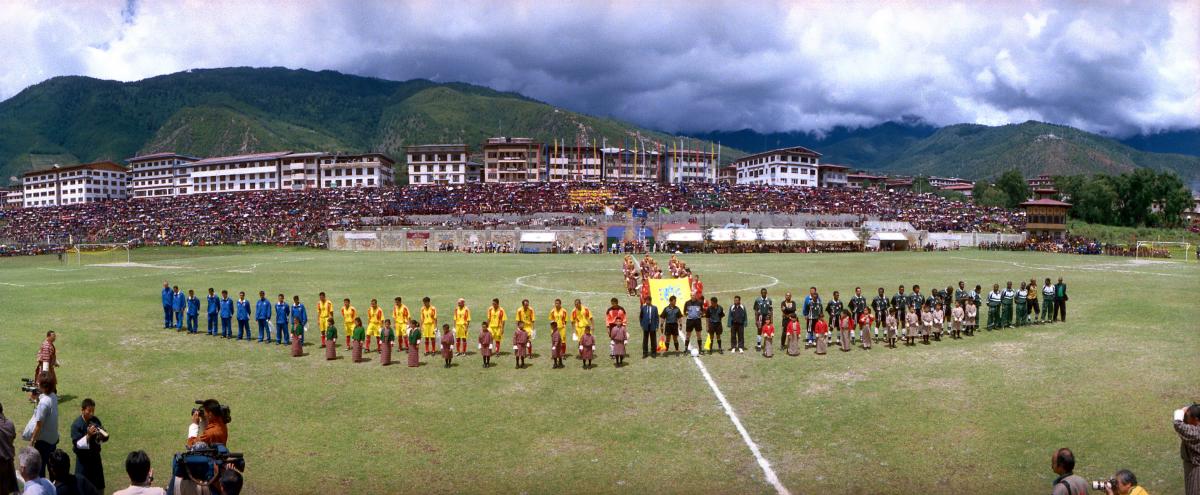
Some 15,000 spectators, triple the population of Montserrat, created a festive atmosphere at the Changlimithang Stadium in Bhutan’s capital Thimphu. The game, recognised by FIFA as an official international match, brought together two nations that had never won a game before. (Photo: Hans van der Meer)
They also considered a match with Ajax Amsterdam, the Dutch national champions at the time, as a somewhat less challenging alternative. ‘I tried the Ajax idea with the Bhutan Football Federation,’ de Jongh explains, ‘but they were a bit surprised and I wasn’t taken seriously.’
Returning empty-handed from Bhutan with five months to go before the World Cup Final, de Jongh decided that it was probably better to return to the more ambitious proposal of a Bhutan vs Monserrat match. Having sent two faxes, one to the head of the Bhutan Football Federation (who happened to be the prime minister as well) and one to the Monserrat Football Association (MFA), the team at Kessels Kramer then sat back and waited for a response.
Monserrat responded enthusiastically within a week. Bhutan didn’t respond until a month later, but having discussed it during a cabinet meeting, they also approved the match wholeheartedly. In the meantime, however, Monserrat had got cold feet and begun to doubt the project, leaving de Jongh and Kramer no other alternative but to travel to Monserrat to convince the authorities of their plan.
Before setting off for Monserrat, de Jongh first travelled to FIFA headquarters in Zurich to get their approval. ‘We realised that if we were going to take this seriously and celebrate this as something serious (though with a certain lightness), then it also had to be an official international match, otherwise, it would be just a gimmick,’ de Jongh explains. ‘I had a single piece of A4 paper with a picture of a Bhutanese player and a Monserrat player. I said to them, “For the love of the game is your motto, so… you must love this idea”.’ FIFA agreed to the match, but only if standard international rules applied. De Jongh agreed, and armed with the official FIFA paperwork he headed for Monserrat.
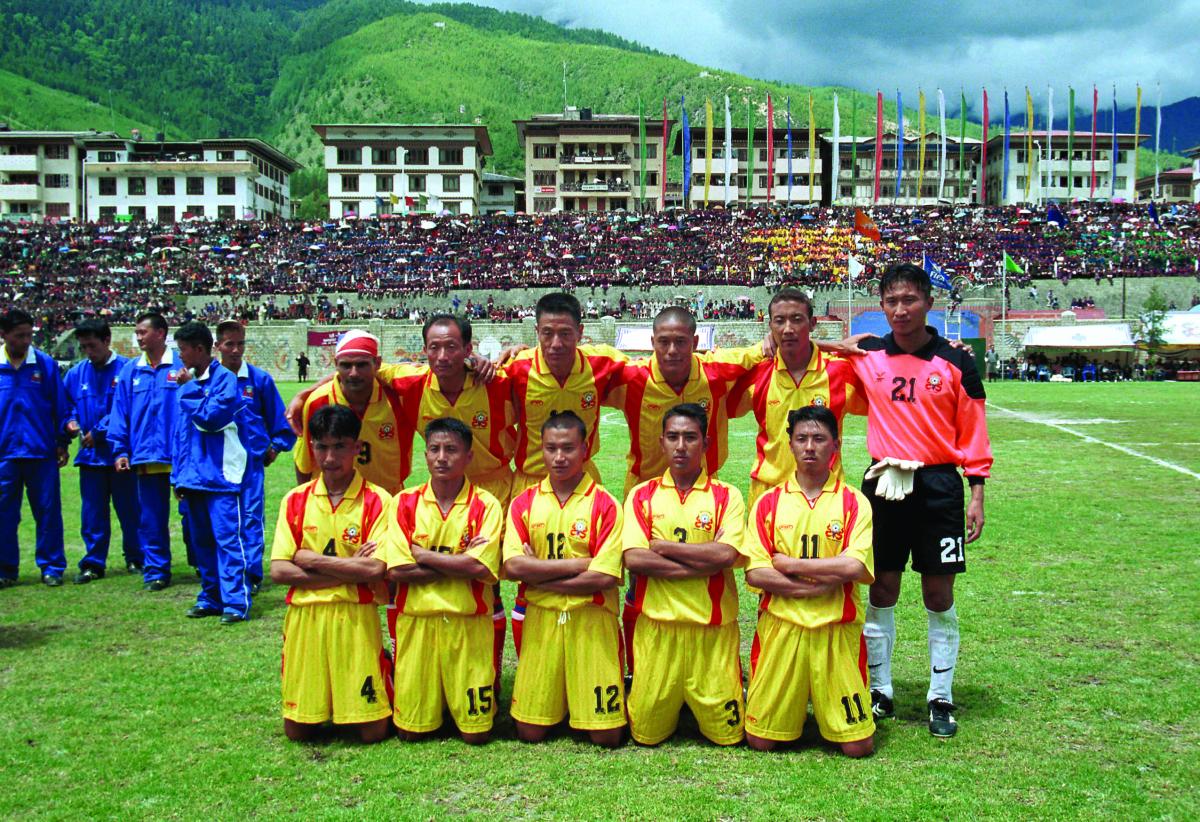
Monserrat, a British overseas territory in the Caribbean, had recently been the focus of the world’s attention as it had suffered a devastating volcanic eruption that destroyed much of the tiny island, including its only football pitch. On arrival, de Jongh and Kramer met with the MFA and the local British government who were labouring to rebuild island life.
Carole Milne, former UK Development Coordinator for the MFA, remembers the initial introduction. ‘It was a message out of the blue from Matthijs: a marketing company was looking for people to help them invest in an idea, The Other Final.’
Her choice of the word ‘invest’ reflects the way that many in Monserrat viewed the project. Paul Morris, then coach of the Monserrat squad, recalls how the authorities’ attitude shaped the politics of the situation: ‘I knew this would be a great opportunity for the players, football in Montserrat and the country as a whole. The MFA president’s principal concern was “What are we getting out of it? What is our payment?”. I argued long and hard that we should see any payment as a bonus and that we should not pass up this opportunity. All costs and expenses had been guaranteed by the Dutch guys. I know [Kessels and de Jongh] both felt disheartened by the attitude at times.’ As for the players, Morris recalls that they were ‘slightly underwhelmed by the announcement, probably thinking, “it seems to be too good to be true, let’s wait and see if it really happens”.’
You seem to enjoy a good story
Sign up to our infrequent mailing to get more stories directly to your mailbox.The reservations of the players and the escalating conflict between Morris and the MFA were not the only discouraging news. Back on the Bhutanese side, Kang Byung-Chan, coach of the national team, died, forcing the team to hire a last-minute replacement, Dutch footballer and coach Arie Schans. Then in Monserrat, the disagreement between Morris and the football association escalated to the point that Morris resigned. A number of players offered to resign with him, but he encouraged them to make the most of the opportunity to play.
One of those players was Charles Thompson, today Deputy Commissioner of Police in Monserrat. ‘I was elated when I heard about the project,’ he remembers. ‘However, I had to do some research as to where Bhutan was.’
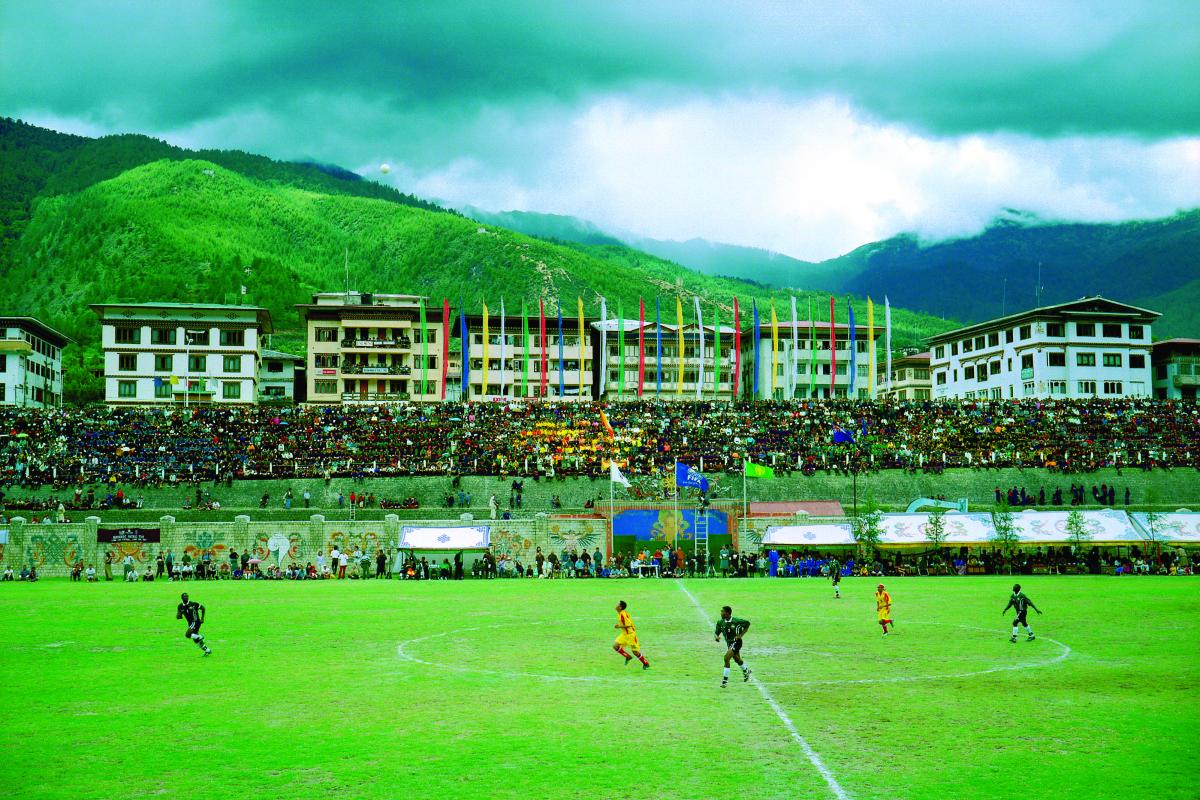
Bhutan took on Montserrat (at the time 202nd and 203rd respectively in the FIFA rankings) for the title of the world’s worst team. After the match the Bhutan and Montserrat players watched the official World Cup final on television together. Brazil beat Germany 2:0. (Photo: Hans van der Meer)
Geographical knowledge was somewhat lacking on both sides, neither of which was completely sure of the other’s location, but it wasn’t just the physical distance that separated the two teams; there were cultural differences to bridge as well. Milne recalls, ‘In Bhutan you bow to say hello, and here were a lot of young Caribbean lads who didn’t have the experience of going overseas where everyone is respectful and polite.’ But cultural, geographical and conceptual differences notwithstanding, the project began to come together. Monserrat, under the guidance of the MFA president, agreed to the deal. A contract prepared by de Jongh emphasised that no profit was to be made by Kessels Kramer and that any profits would go to fund football in the two countries.
In Amsterdam, Jacqueline Kouwenberg, production manager for the documentary, was preparing the groundwork. ‘The most time-consuming part was the logistics,’ she says. ‘Getting a whole football team from Montserrat to Bhutan, and getting crews and equipment to Montserrat and Bhutan for the shoots took work.’ Thanks to the diligence of Kouwenberg and Milne, however, the Monserrat team made it to Thimphu.
Dutch photographer Hans van der Meer was on hand to meet and record the team as they arrived and was witness to the culture shock experienced by the Monserrat team as they suddenly found themselves under pressure to perform for an expectant home crowd at a test match with a local side. Worn out from an exhausting trip that included five layovers and a three-hour bus ride on bumpy roads, and with half the team ill with a stomach bug, the last thing that they wanted to do was play an hour and a half of football. The huge crowd of enthusiastic spectators that had gathered for the game, however, was excited.
Van der Meer recalls, ‘When I heard the team’s internal struggles, I said to the team captain, “Walk with me.” I took him and showed him the crowd, and he went back and said to the team, “Well, we have to play, there is no other way.” It was funny; I recall there was a cow crossing the pitch whilst they were trying to play. I think the local team won. It was a hilarious moment.’
Whoever won, Schans was encouraged by what he saw. ‘Monserrat is a low-lying country. Their team had climate sickness. When they climbed the stairs in the hotel they had to lie down to rest for 15 minutes. This was a plus for our team as far as I was concerned. Monserrat are physically big compared to Bhutan players; my players said, “Ah! It’s impossible to win against these kind of players,” and [the Monserrat side] were doing tricks with the ball on their shoulders and on their heads… they made their training into a real show. My players got smaller and smaller, and I said, “Look, boys, every game in the world, whether it’s Monserrat versus Bhutan or Germany versus Spain, starts with a 50/50 chance, so we will see what happens.”’
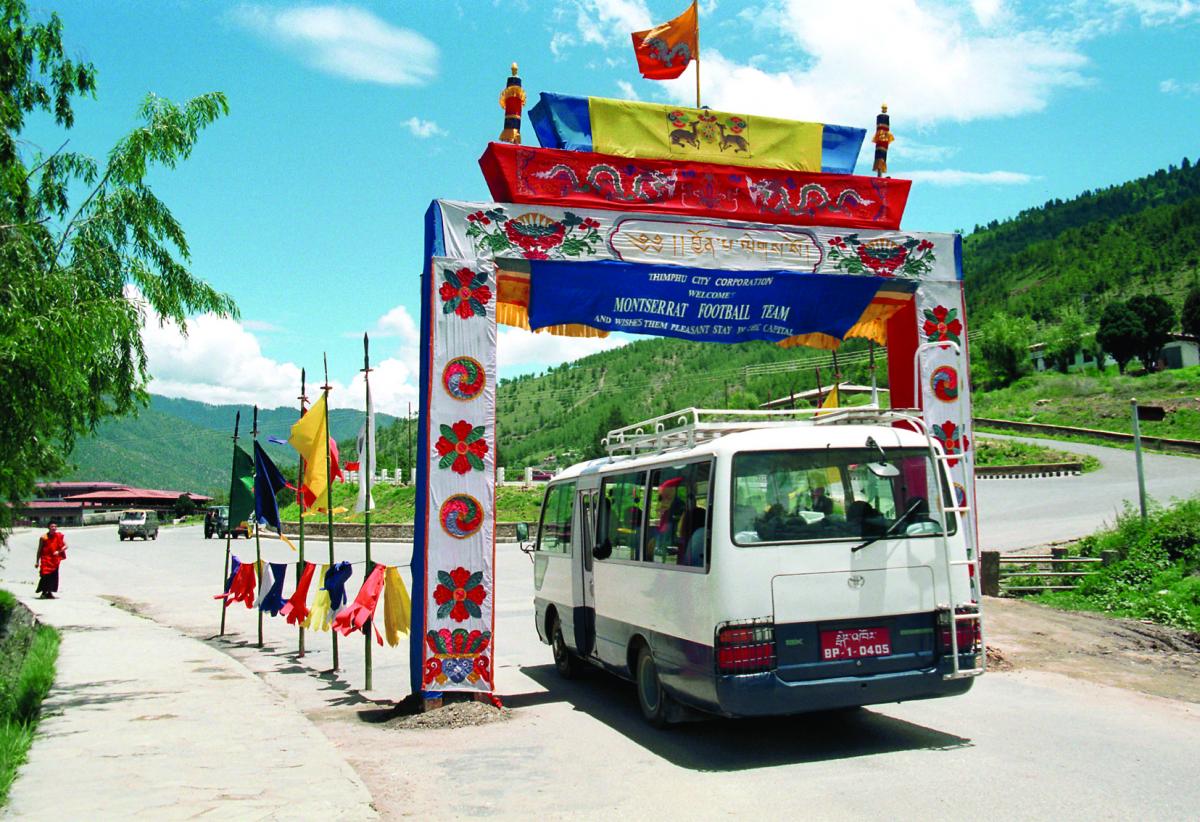
A Bhutanese welcome sign for the Montserrat national football team. Due to the heavy volcanic activity on the the small Caribbean island, the game was played in Bhutan, at an elevation of 2,320 m (7,656 ft). (Photo: Hans van der Meer)
By the time that 30 June arrived, somehow everything had fallen into place. While the players from Germany and Brazil were preparing to play the match of their lives to a worldwide audience of more than 63 million viewers, Bhutan and Monserrat were also preparing to play for an audience of 15,000 and a Dutch film crew.
The game took place in the lashing rain, but that did nothing to dampen the spirits of the home side. ‘When Bhutan scored the first goal in the first five minutes, my feeling was that the players were getting bigger minute by minute,’ says Schans. ‘They felt satisfied and thrust forward hard. The moment we scored that goal, the game was almost decided.’
In the end the score was 4–0 to Bhutan, the first official game in history that the country won.
Despite the pain of losing a shutout match, Monserrat took the defeat with good grace, van der Meer remembers. ‘There was no ridicule. This match was truly impressive in terms of humanity. Both teams were very friendly with each other. After the game we all went and watched the World Cup for real, and the atmosphere was like it is all over the world: football brings people together.’
The World Cup Final made the usual headlines, but The Other Final made headlines of its own. The newswires had picked up on the feel-good factor of the underdogs playing their own final match, and the story quickly spread to international news agencies across the world.

The idea for the match came from the Dutch communications agency Kessels Kramer, who used the event to bring worldwide attention to two cultures from opposite sides of the globe. Rather than focusing on competition, the resulting documentary, The Other Final, celebrates bringing people together.
For Thompson the event was a reminder that ‘there are places out there, which, for a number of reasons, cannot be like the big names in the game today, but the simple facets of the game are held dear to their hearts. That even if we are from different cultures, backgrounds and ways of life, football means a lot to many people.’
For Schans the historic victory resulted in the offer of a permanent position, an offer that he accepted, becoming the trainer of Bhutan’s under-20 team for a number of years.
For the production team from Kessels Kramer the end of the match was far from the end of the adventure, and they returned to Amsterdam to finish the film. ‘There was a lot of work to be done after the film was made,’ says Kouwenberg. ‘We didn’t sell the idea to any broadcaster before the shoot; we had to sell it after we made the film to earn back the investments, and that part of the business was completely new to us.’ Released in 2003, The Other Final went on to be named best documentary at the Avignon Film Festival and to get special mention in its category at the Bermuda International Film Festival.
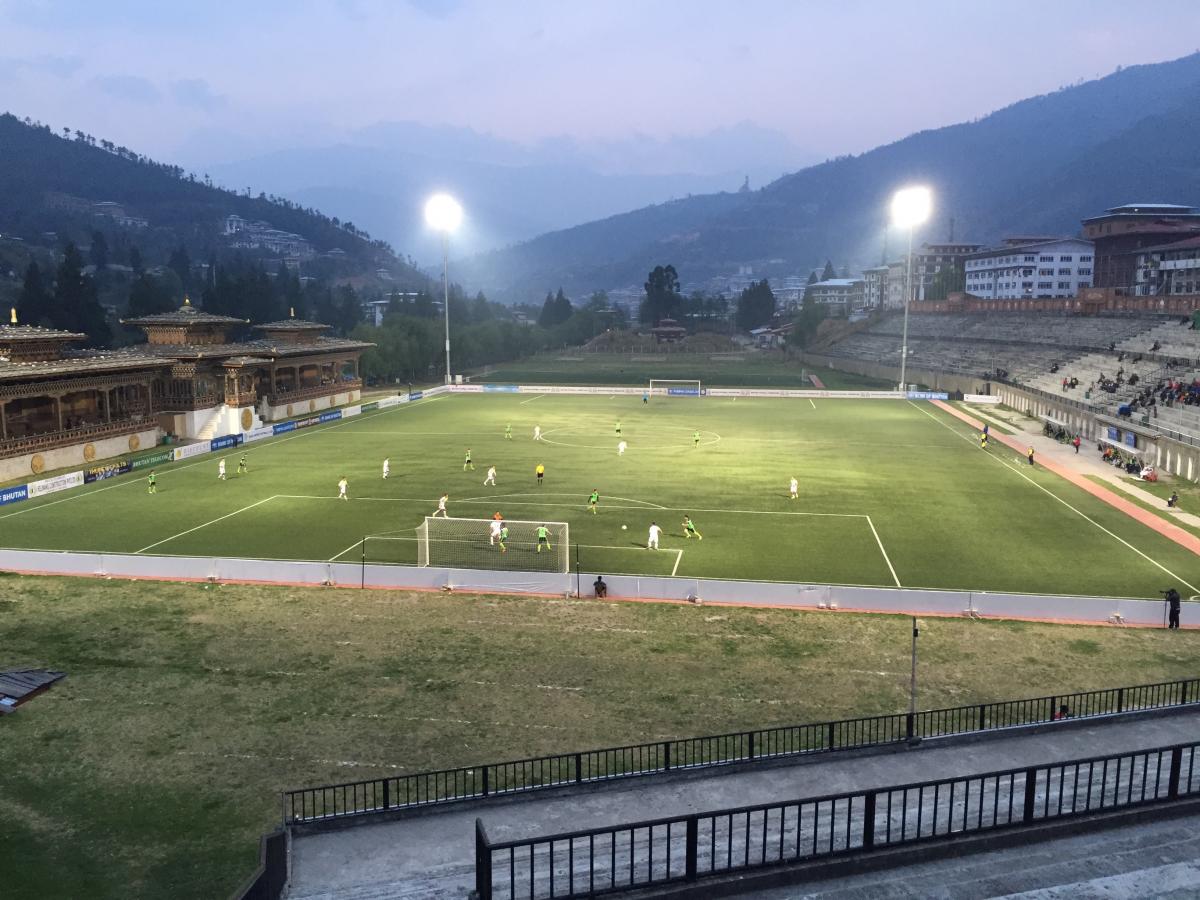
Football is fast gaining popularity in both countries, with a modest amount of money spent at the grass roots level. Since their first historic win in 2002 Bhutan has won seven other competitive fixtures against other international teams, advancing in 2015 to the 159th position in the FIFA ranking. (Photo: Peter Biľak)
In Morris’ opinion, ‘the end product was exceptional. It was a balance of exploring culture, common goals, possibilities, differences and joys, all through a single game of football. Fantastic. I praise the guys for resisting airing their frustrations at the Montserrat FA for their pettiness during the process. They deserved all the accolades they received.’
At a time when FIFA is rife with allegations of corruption The Other Final remains a refreshing reminder of what football is really about. Kramer, like the other participants, cites the film as a remarkable, life-changing experience. ‘It was an extremely personal project and the one I love most,’ he says. ‘What I remember most about it is the enormous adventure of going to two very remote places with a super-small crew and hardly any equipment. It has created a lifelong friendship and bond with all the people involved. Whenever I meet one of our crew, they always tell me that this was the project of their lives. And that’s true for me as well. I still get job inquiries from all over the world based on this film. What it taught us is that a special idea can make anything happen.’

